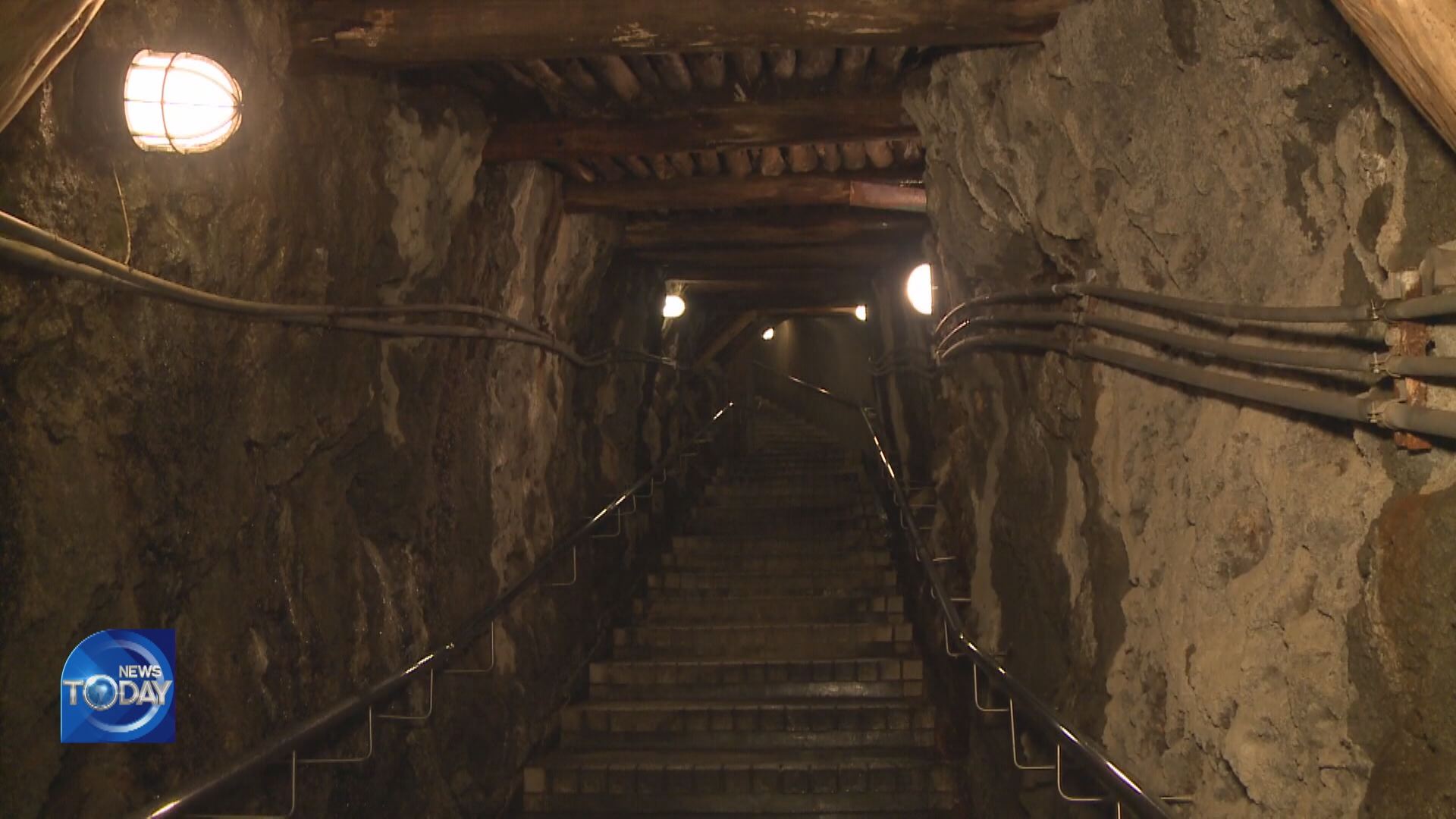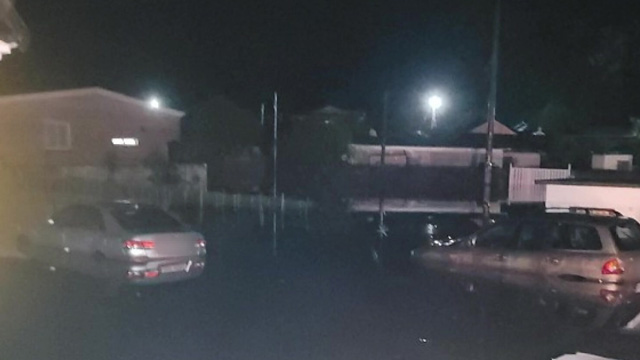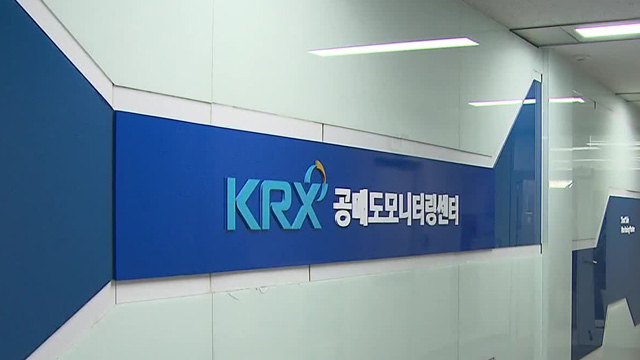SADO MINE’S UNESCO LISTING UNLIKELY
입력 2022.07.29 (15:05)
수정 2022.07.29 (16:45)
읽어주기 기능은 크롬기반의
브라우저에서만 사용하실 수 있습니다.
[Anchor Lead]
Japan's push to obtain UNESCO World Heritage recognition for the controversial Sado mine has fallen through because officials say its application is insufficient. Tokyo had attempted to leave out the mine's history of using forced Korean laborers, a ploy once used to list the Hashima Island as a World Heritage site. But the scheme backfired this time, making the mine ineligible even for the screening process. Strong protests from South Koreans may have also played a role in the exclusion.
[Pkg]
Despite the South Korean government's strong protest, the Japanese government went ahead with recommending Sado mine as a UNESCO world heritage in February. But Tokyo announced on Thursday that Sado mine has been removed from the 2023 World Heritage screening process. According to UNESCO, there were some insufficient points in the recommendation form provided by the Japanese government such as a specific scope for review. Tokyo had sent a letter to UNESCO and made several requests for reconsideration by sending the deputy minister of cultural affairs. But UNESCO finalized its decision and Japan's Prime Minister expressed deep disappointment. However, Tokyo apparently is not going to give up.
[Soundbite] Shinsuke Suematsu(Japanese Minister of Cultural Affairs) : "We will submit a tentative recommendation by late Sept. and an official recommendation by Feb. 1, 2023."
South Koreans have been protesting the move to register Sado mine as a UNESCO world heritage because the facility used wartime forced labor from Korea. Subsequently, the Japanese government used an underhanded trick of restricting the recommendation period to pre-colonization years. Experts noted that Tokyo had unreasonably adjusted the time span to leave out the fact that wartime forced labor was used just like it had for Hashima Island. That appears to have made the scope of review unclear and the mine was removed from the screening process.
[Soundbite] Kang Dong-jin(Director, UNESCO Advisory Body) : "The mine included several heritages with hard-to-define areas as auxiliary elements, which made it difficult to review."
The latest UNESCO decision hints at its distrust of Japan for not properly documenting Hashima Island's history of using wartime forced labor from Korea and its reluctance to get involved in the conflict between Seoul and Tokyo.
Japan's push to obtain UNESCO World Heritage recognition for the controversial Sado mine has fallen through because officials say its application is insufficient. Tokyo had attempted to leave out the mine's history of using forced Korean laborers, a ploy once used to list the Hashima Island as a World Heritage site. But the scheme backfired this time, making the mine ineligible even for the screening process. Strong protests from South Koreans may have also played a role in the exclusion.
[Pkg]
Despite the South Korean government's strong protest, the Japanese government went ahead with recommending Sado mine as a UNESCO world heritage in February. But Tokyo announced on Thursday that Sado mine has been removed from the 2023 World Heritage screening process. According to UNESCO, there were some insufficient points in the recommendation form provided by the Japanese government such as a specific scope for review. Tokyo had sent a letter to UNESCO and made several requests for reconsideration by sending the deputy minister of cultural affairs. But UNESCO finalized its decision and Japan's Prime Minister expressed deep disappointment. However, Tokyo apparently is not going to give up.
[Soundbite] Shinsuke Suematsu(Japanese Minister of Cultural Affairs) : "We will submit a tentative recommendation by late Sept. and an official recommendation by Feb. 1, 2023."
South Koreans have been protesting the move to register Sado mine as a UNESCO world heritage because the facility used wartime forced labor from Korea. Subsequently, the Japanese government used an underhanded trick of restricting the recommendation period to pre-colonization years. Experts noted that Tokyo had unreasonably adjusted the time span to leave out the fact that wartime forced labor was used just like it had for Hashima Island. That appears to have made the scope of review unclear and the mine was removed from the screening process.
[Soundbite] Kang Dong-jin(Director, UNESCO Advisory Body) : "The mine included several heritages with hard-to-define areas as auxiliary elements, which made it difficult to review."
The latest UNESCO decision hints at its distrust of Japan for not properly documenting Hashima Island's history of using wartime forced labor from Korea and its reluctance to get involved in the conflict between Seoul and Tokyo.
■ 제보하기
▷ 카카오톡 : 'KBS제보' 검색, 채널 추가
▷ 전화 : 02-781-1234, 4444
▷ 이메일 : kbs1234@kbs.co.kr
▷ 유튜브, 네이버, 카카오에서도 KBS뉴스를 구독해주세요!
- SADO MINE’S UNESCO LISTING UNLIKELY
-
- 입력 2022-07-29 15:05:33
- 수정2022-07-29 16:45:08

[Anchor Lead]
Japan's push to obtain UNESCO World Heritage recognition for the controversial Sado mine has fallen through because officials say its application is insufficient. Tokyo had attempted to leave out the mine's history of using forced Korean laborers, a ploy once used to list the Hashima Island as a World Heritage site. But the scheme backfired this time, making the mine ineligible even for the screening process. Strong protests from South Koreans may have also played a role in the exclusion.
[Pkg]
Despite the South Korean government's strong protest, the Japanese government went ahead with recommending Sado mine as a UNESCO world heritage in February. But Tokyo announced on Thursday that Sado mine has been removed from the 2023 World Heritage screening process. According to UNESCO, there were some insufficient points in the recommendation form provided by the Japanese government such as a specific scope for review. Tokyo had sent a letter to UNESCO and made several requests for reconsideration by sending the deputy minister of cultural affairs. But UNESCO finalized its decision and Japan's Prime Minister expressed deep disappointment. However, Tokyo apparently is not going to give up.
[Soundbite] Shinsuke Suematsu(Japanese Minister of Cultural Affairs) : "We will submit a tentative recommendation by late Sept. and an official recommendation by Feb. 1, 2023."
South Koreans have been protesting the move to register Sado mine as a UNESCO world heritage because the facility used wartime forced labor from Korea. Subsequently, the Japanese government used an underhanded trick of restricting the recommendation period to pre-colonization years. Experts noted that Tokyo had unreasonably adjusted the time span to leave out the fact that wartime forced labor was used just like it had for Hashima Island. That appears to have made the scope of review unclear and the mine was removed from the screening process.
[Soundbite] Kang Dong-jin(Director, UNESCO Advisory Body) : "The mine included several heritages with hard-to-define areas as auxiliary elements, which made it difficult to review."
The latest UNESCO decision hints at its distrust of Japan for not properly documenting Hashima Island's history of using wartime forced labor from Korea and its reluctance to get involved in the conflict between Seoul and Tokyo.
Japan's push to obtain UNESCO World Heritage recognition for the controversial Sado mine has fallen through because officials say its application is insufficient. Tokyo had attempted to leave out the mine's history of using forced Korean laborers, a ploy once used to list the Hashima Island as a World Heritage site. But the scheme backfired this time, making the mine ineligible even for the screening process. Strong protests from South Koreans may have also played a role in the exclusion.
[Pkg]
Despite the South Korean government's strong protest, the Japanese government went ahead with recommending Sado mine as a UNESCO world heritage in February. But Tokyo announced on Thursday that Sado mine has been removed from the 2023 World Heritage screening process. According to UNESCO, there were some insufficient points in the recommendation form provided by the Japanese government such as a specific scope for review. Tokyo had sent a letter to UNESCO and made several requests for reconsideration by sending the deputy minister of cultural affairs. But UNESCO finalized its decision and Japan's Prime Minister expressed deep disappointment. However, Tokyo apparently is not going to give up.
[Soundbite] Shinsuke Suematsu(Japanese Minister of Cultural Affairs) : "We will submit a tentative recommendation by late Sept. and an official recommendation by Feb. 1, 2023."
South Koreans have been protesting the move to register Sado mine as a UNESCO world heritage because the facility used wartime forced labor from Korea. Subsequently, the Japanese government used an underhanded trick of restricting the recommendation period to pre-colonization years. Experts noted that Tokyo had unreasonably adjusted the time span to leave out the fact that wartime forced labor was used just like it had for Hashima Island. That appears to have made the scope of review unclear and the mine was removed from the screening process.
[Soundbite] Kang Dong-jin(Director, UNESCO Advisory Body) : "The mine included several heritages with hard-to-define areas as auxiliary elements, which made it difficult to review."
The latest UNESCO decision hints at its distrust of Japan for not properly documenting Hashima Island's history of using wartime forced labor from Korea and its reluctance to get involved in the conflict between Seoul and Tokyo.
이 기사가 좋으셨다면
-
좋아요
0
-
응원해요
0
-
후속 원해요
0

















이 기사에 대한 의견을 남겨주세요.